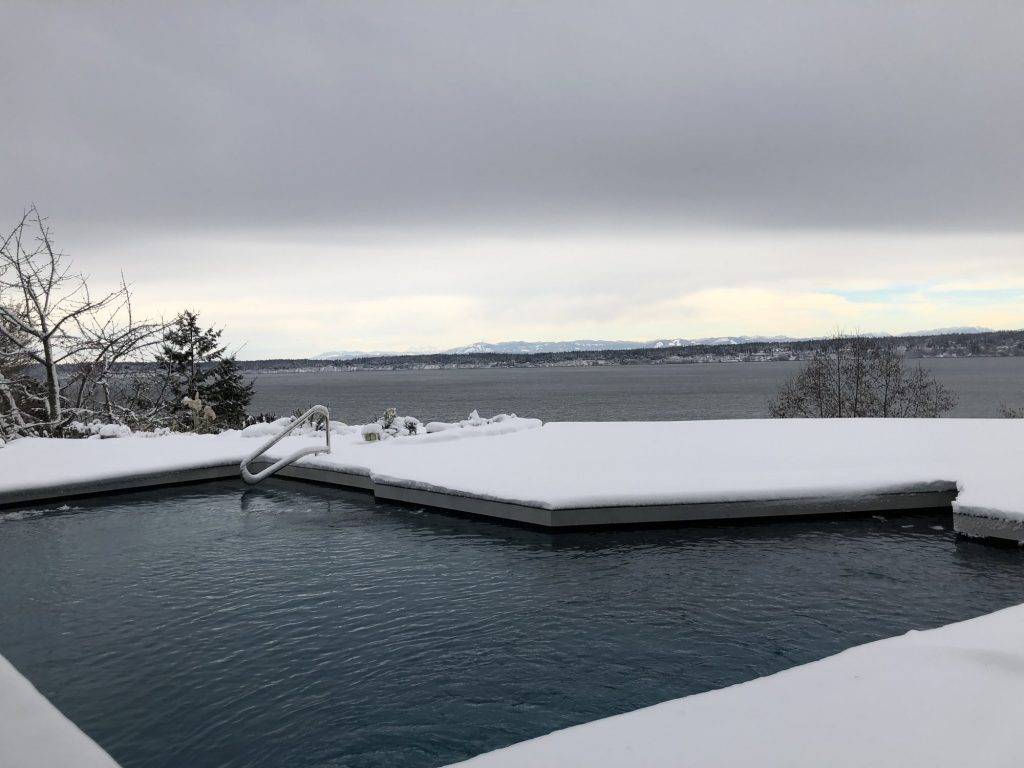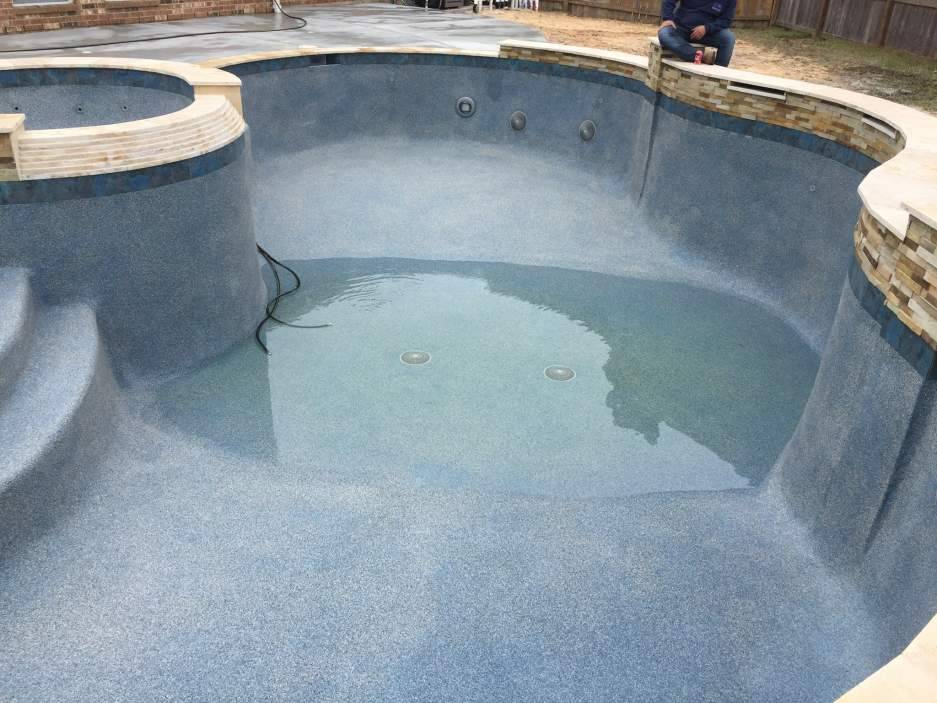When a homeowner is looking to plaster their pool the last thing they frequently wish to think about is what can they do to create a pool that will last for 20 plus years. We’d like to share with you a few very simple tips however that one should consider to ensure a quality plaster job.
Avoid applying plaster in Extreme Temperatures
One of the first items that will be discussed with your builder is the time of year your pool will be built. For those living in cold weather areas that would frequently close their pool over the winter it is their best interest to avoid applying plaster in late Fall or early Winter. Homeowners should keep in mind that the water chemistry will fluctuate greatly over the first year and it’s in the best interest to keep a close eye on things.
This is very difficult when the pool is covered in snow and ice. One item that could easily occur in this scenario is the pH levels increase rapidly to levels outside of TFP’s recommended levels causing scale to form over the winter. If this occurs the homeowner will need to preform an acid wash to remove the scale thus reducing the life of the plaster. A better option would be to attempt to wait until very late Winter or early Spring when the pool is able to be left open thus giving the homeowner the ability to manage the water’s chemistry.
On the opposite end of the spectrum are those living in areas of extreme heat. On plaster day if the weather is to be above roughly 95° it’s best to look into “tenting” the pool. This helps protect the surface and the workers from the extreme sun thus allowing the surface to cure slowly. Another perk to tenting a pool is that it protects against stuff like bird droppings that may occur.
When selecting a color, avoid organic dyes
Selecting a color is never an easy task for a homeowner, so let’s add another variable to make things even more difficult. Pigments are either organic or inorganic and they tend to act differently when exposed to chlorine over time. Organic pigments are commonly made from natural materials such as plants or animals while in-organic pigments are mostly man made from various non-carbon based materials. Inorganic pigments tend to hold their color longer while organic ones tend to whiten when exposed to an oxidizer. Inorganic pigments do tend to run more expensive than organic ones however tend to fair better over time. For more information Kim Skinner (onBalance) has wrote this article on the forum.
All that said please keep in mind, nothing is set in stone. If you happen to find a color that’s perfect for your pool that happens to be organic, don’t fret. Also don’t lock yourself into inorganic colors as well simply because you think they’ll never fade. Our reasoning to mention this tip is to give you all the information in an attempt to get years out of your surface. We’ve had good luck minimizing fading when using the FC/CYA ratio, so when selecting a color we simply want you to have all the information.
Preform a test on your water
Before mixing any plaster it’s a good idea to have your water tested for metals such as Iron, Copper, or Manganese. If any of these metals are found it’s a good idea to have them filtered out before using the water to mix the plaster with. Even if metals aren’t found in the water it’s a very good idea for the user to add a metal sequestering agent to the fill water as an insurance policy. If any metals do happen to make their way onto the surface of a newly plastered pool it’s almost impossible to remove them. Additionally users need to make sure they have all the proper chemicals on hand to get their CSI in range. Users should attempt to maintain a slightly positive CSI to help allow the surface harden properly.
On Plaster day, be Onsite
On the day plaster is to be applied one should do their best to be onsite. Once mixed the crew has a limited period of time to apply the plaster or the product must be discarded. If any issues may occur during this timeframe decisions must be made quickly in order to avoid wasting the product. At bare minimum it’s a good idea to make sure the crew can get ahold of somebody who can quickly hear all the facts and make a decision. While you’re there, take photos and enjoy the process.
You’ve done a TON of work and now all your efforts are starting to pay off. Here soon you will be enjoying your pool. Many may even want to take it a step further and make a party of things. Fire up the grill, order some pizza, and keep the beverages flowing as all these items are a cheap way to get onto the good side of the crew.
Resist the urge to fill
Now that the plaster is finished, call timeout. A homeowner should wait for the surface to harden for approximately six hours. The surface at first is very fragile and susceptible to damage. Filling the pool to early could cause erosion to occur and damage the surface. Take a few hours to cleanup the area and keep yourself busy to avoid the urge to fill.
Take a few hours to cleanup the area and keep yourself busy to avoid the urge to fill. Let the plaster sit and harden. Once the fill process is started the homeowner should NOT stop for any reason until the pool is fully full. If water is stopped before full a ring could form at the waterline and will be impossible to remove without an acid wash.
These are just a few basic items a homeowner can do to help create an end product that should last the homeowner for many years. For those who luck out and get a top notch pool builder some may wish to take an even more hands on approach to the plastering of their pool. You can read even more in depth list in this thread by onBalance on the forum.




